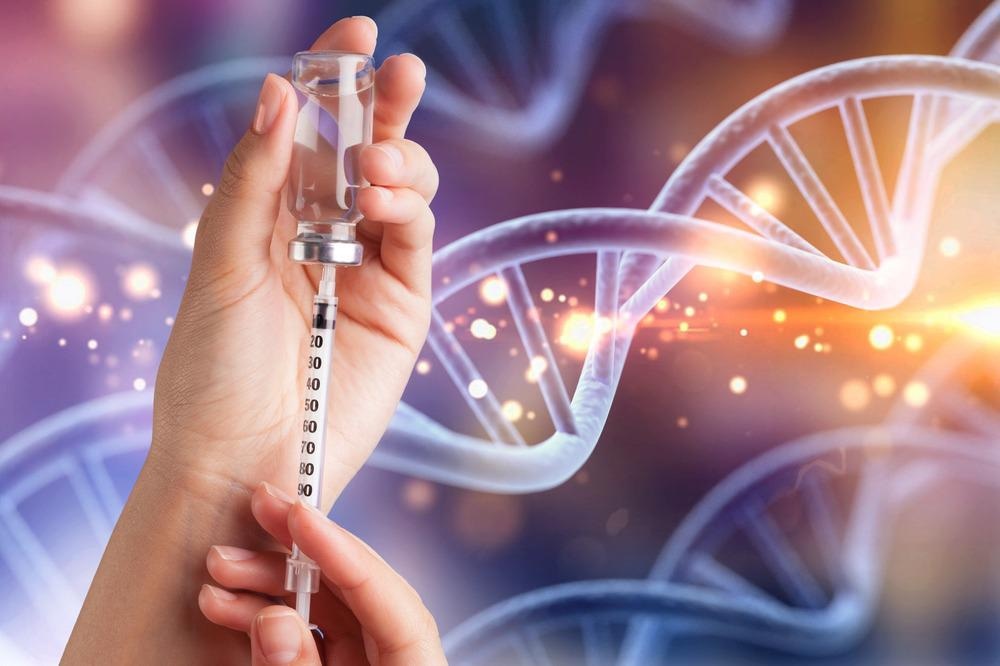Introduction
Understanding the Immune System
How Do Vaccines Work?
Vaccines and Microorganisms: Production and Recent Advances
What Does the Future Hold?
References
Throughout human history, pathogenic microorganisms have caused diseases that have killed millions. Over the last couple of centuries, vaccines and antibiotics have helped turn the tide, leading to significantly improved therapeutic outcomes. This article will discuss the subject of vaccines and microorganisms.

Image Credit: Inkoly/Shutterstock.com
Understanding the Immune System
To understand disease and vaccines, we must first understand the human immune system and the body’s defense against pathogenic organisms. Disease-causing organisms such as viruses and bacteria attack the cells and multiply upon entering the body. This elicits an immune response from the host through cells such as B-lymphocytes and T-lymphocytes, which are found in the bloodstream.
When the body first encounters a pathogen, it can take several days to mount an immune response, and if the disease has not been encountered before, it can cause a more severe illness. After infection, if the infected patient survives, the body remembers the disease and its antigens by keeping T-lymphocytes in the immune system. T-lymphocytes are also termed “memory cells” for this reason. The parts of a microorganism the T-lymphocytes remember are called antigens.
How Do Vaccines Work?
Disease-causing pathogens, especially new ones, can cause severe infections and death in infected individuals. Vaccines help the body recognize a disease-causing microorganism by imitating an infection. Thus, they cause an immune response when the body encounters the pathogen.
This imitated infection caused by vaccines does not lead to disease, but it can have mild side effects. Once the imitated infection ceases, the body is left with a supply of T-lymphocytes which will remain in the body, ready for future activation in the event of a disease. Vaccines usually require more than one dose to overcome the immune response waning over time.
Some patients cannot be vaccinated, such as those with weakened and compromised immune systems (people living with cancer and HIV.) Additionally, some individuals can be allergic to vaccine components. Vaccinating a large enough proportion of the healthy population leads to herd immunity, which stops pathogens from circulating because they cannot infect as many people or cause serious disease in patients.
Over the past few decades, there have been several successful vaccination programs. Two of the most notable successes are smallpox and polio. Both diseases used to be major killers. Smallpox has been completely wiped out in human populations, and polio is nearly eradicated. According to the WHO, wild poliovirus now only exists in Pakistan and Afghanistan.
Vaccines and Microorganisms: Production and Recent Advances
Vaccines are produced from different microbial sources. These are live, attenuated microbes such as the virus that causes the common cold, from dead, inactivated pathogens, or recombinant or inactivated parts of the microbe’s genetic code, toxins, and surface proteins. Some newer vaccines work by using the blueprint for antigens rather than the antigens themselves.
Vaccine production matters to microbiology. Currently, two major killers, HIV and malaria, have no vaccine to protect patients. However, recent advances in microbiology have increased the likelihood of creating new types of vaccines that can protect against emergent diseases.
Recent studies have enhanced our understanding of the human immune system and how it fights infection, leading to new targets for treatment. Biochemistry and Molecular biology have advanced significantly in recent years, and these fields are informing vaccine design. Additionally, scientists understand more about pathogenic microbes and how they cause and spread infection.
DNA and RNA vaccines are a recent advance in medical science. These vaccines are made from non-replicating plasmids, which induce a strong long-term immune response in hosts. The Pfizer and Moderna vaccines against COVID-19 are examples of this newer vaccine technology.
Novel technologies have been explored to create more effective and safer vaccines with fewer side effects in recent years. These technologies include viral vectors produced in animal and microbial cells, virus-like particles produced in insect and yeast cells, and DNA plasmids produced in E. Coli cells. Advances in purification methods that improve vaccine efficiency have also been achieved, alongside innovative analytical methods that improve the understanding of processes.
Legacy vaccines are still in use despite their traditional manufacturing processes. Recent advances in improving these vaccines include novel delivery systems, enhanced stability methods, and updating their formulation (new combination vaccines.) There has also been increased interest in temperature stabilization of vaccines to aid better storage and transport methods.

Image Credit: Billion Photos/Shutterstock.com
What Does the Future Hold?
Pathogenic microorganisms have had an intimate relationship with humanity since pre-history, causing numerous epidemics and pandemics. As human society has become more interconnected and populations have grown to levels that far exceed any point in history, the likelihood of devastating outbreaks has increased exponentially. The ongoing COVID-19 pandemic has crystallized the need for effective vaccines to protect against emergent pathogens and future pandemics.
The fields of microbiology, biotechnology, and molecular biology will continue to play a role in developing future vaccines, with recent advances in these fields showing intriguing potential to create safer and more efficacious vaccines.
References: